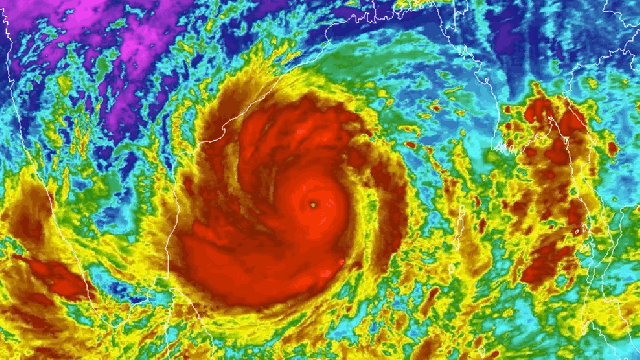A rapidly intensifying Category 5 super cyclone is moving across the Bay of Bengal and heading for the India-Bangladesh border. The storm could cause extensive damage in an area already suffering from the covid-19 pandemic.
With sustained wind speeds of 250 kilometres per hour, Cyclone Amphan is the strongest storm in the northern hemisphere so far this year. It’s expected to bring heavy rainfall to the eastern part of Bengal by Monday night and travel to the Indian state of West Bengal the next day. On Wednesday, it is expected to make landfall near Kolkata.
Amphan is a super cyclone, the most severe category of storm on the Indian Meteorological Department’s scale. This marks the first time on record that super cyclones have been recorded in the Indian Ocean basin in two consecutive years, following 2019’s Cyclone Kyarr that formed on the opposite side of the basin. If it continues as forecast, Amphan will be the first super cyclonic storm to hit the Bengal region in more than 20 years. The last one the area saw in 1999 killed more than 9,000 people and was likely the worst cyclone disaster in the last century.
Amphan is churning over warming than normal water, which is giving it the fuel it needs. Adam Sobel, the director of the Initiative on Extreme Weather and Climate at Columbia University, told Earther in an email that temperatures in the Bay of Bengal are “about as high as is ever observed.” Global warming is at least partially responsible for those high temperatures.
“There is considerable evidence, from multiple different lines of evidence, that global warming is making cyclones more severe,” he said.
As it approaches the coast, the Joint Typhoon Warning Centre forecasts that Amphan’s winds will weaken to the equivalent of a Category 1 storm, but that doesn’t mean residents will be safe. The size and power of the storm over the next few days will whip up powerful storm surge. The Indian Meteorological Department still expects Amphan to bring a surge of 10 to 16 feet above tide level when it comes ashore. Aid groups predict millions could be affected, and the northeast Indian state of Odisha is preparing to evacuate more than one million people.
“It will almost certainly be a very dangerous storm regardless,” Sobel said.
Those dangers are even more acute because both India and Bangladesh are still in the throes of the coronavirus pandemic. Neither country has yet slowed its rates of new infections, and the regions the cyclone is set hit are home to many extremely vulnerable people. In Bangladesh, for instance, the super cyclone is expected to cause heavy precipitation and flooding in the Cox’s Bazar refugee camps, which house more than a million refugees from the Rohingya crisis and are already flood-prone.
Cyclone #Amphan still intensifying now expected to reach 150-knots as it gains latitude in the Bay of Bengal.
Cyclone equivalent to a high-end Category 5 hurricane w/potential for catastrophe at landfall in India near Kolkata but also surge effects in low-lying Bangladesh. pic.twitter.com/A1SLsE3n95
— Ryan Maue (@RyanMaue) May 18, 2020
As the climate crisis worsens, cyclones of this magnitude will likely become more common. A December 2019 report found that global warming of 2 degrees Celsius above pre-industrial temperatures may increase tropical cyclone intensities by up to 10 per cent and rainfall by up to 15 per cent. India gets hit by more than a tenth of all the world’s tropical cyclones. While Amphan is the first super cyclonic storm in 20 years, those could become more common as cyclones become more severe in general. And that could spell disaster.
